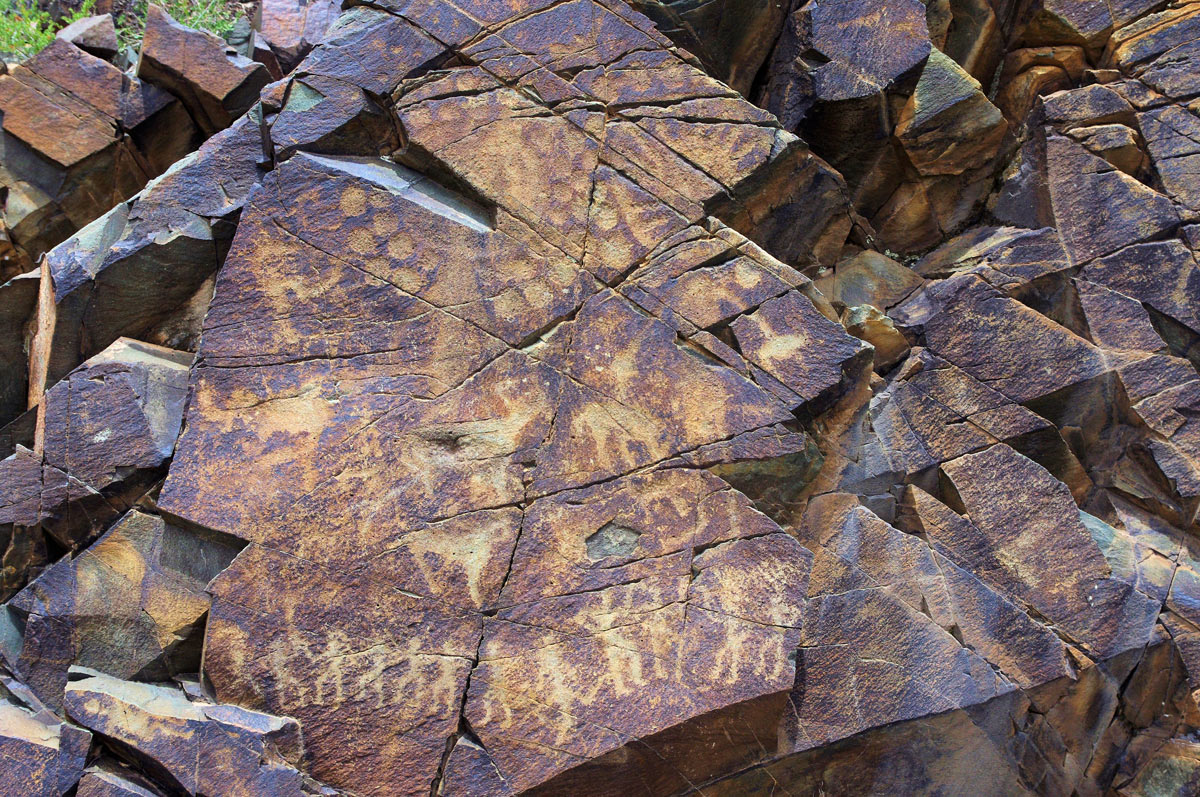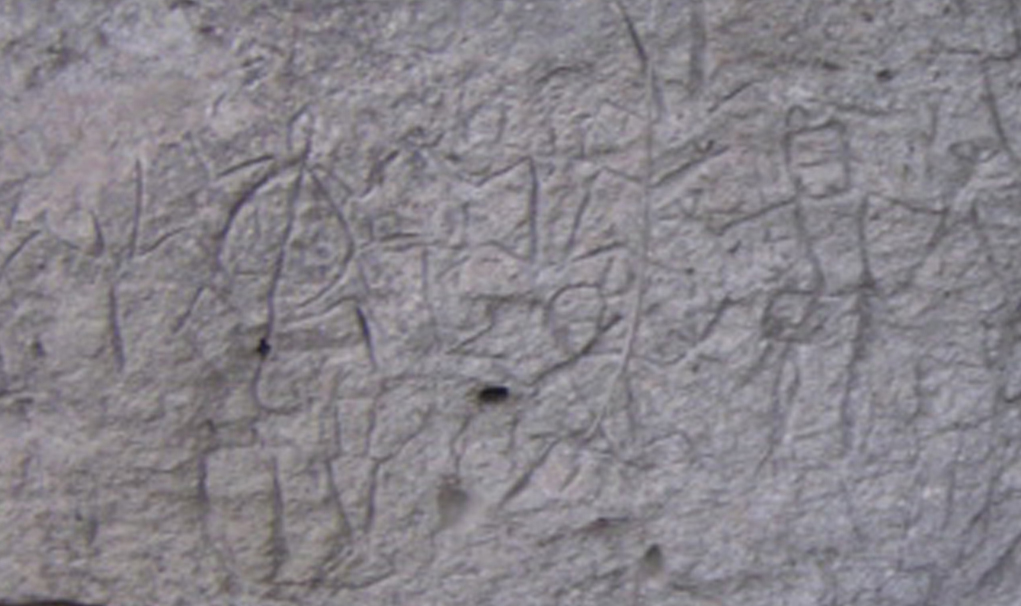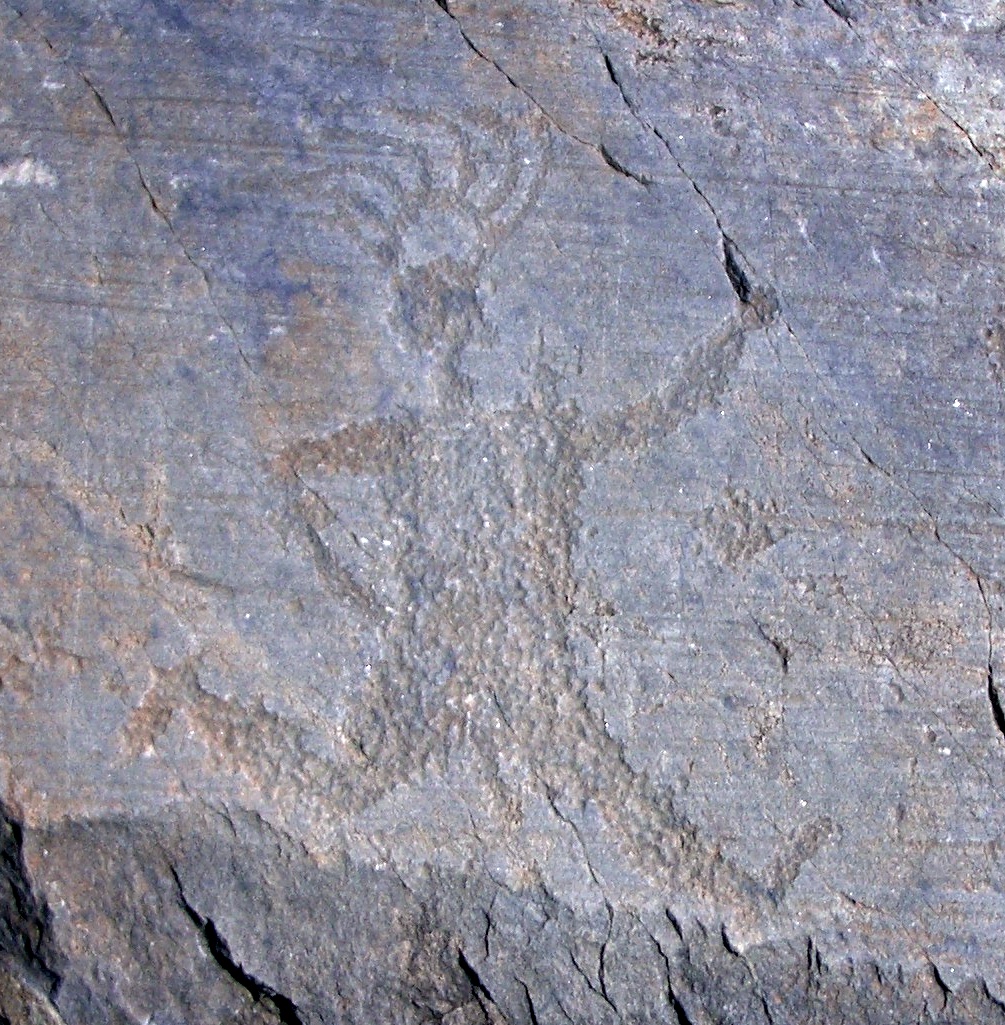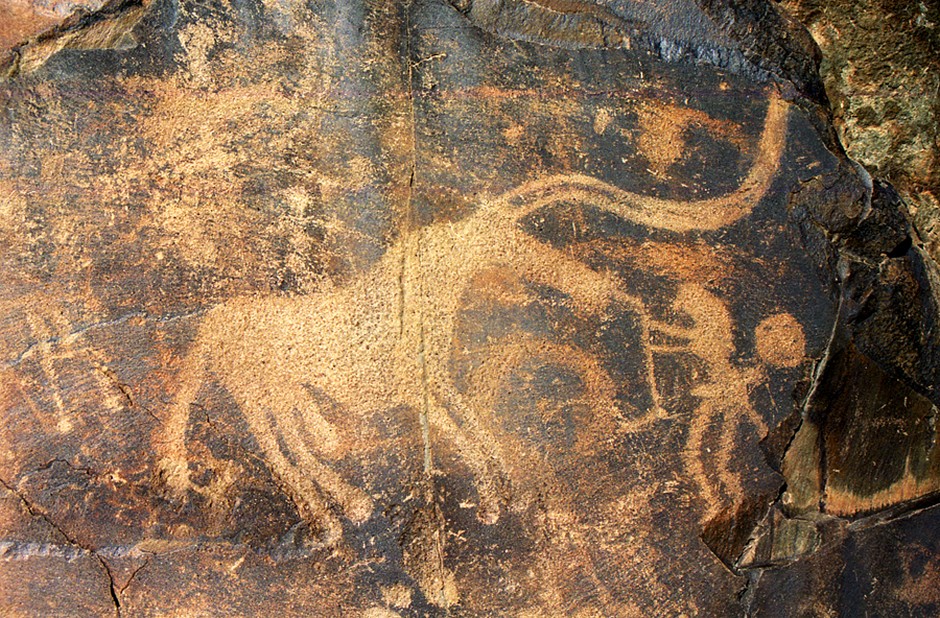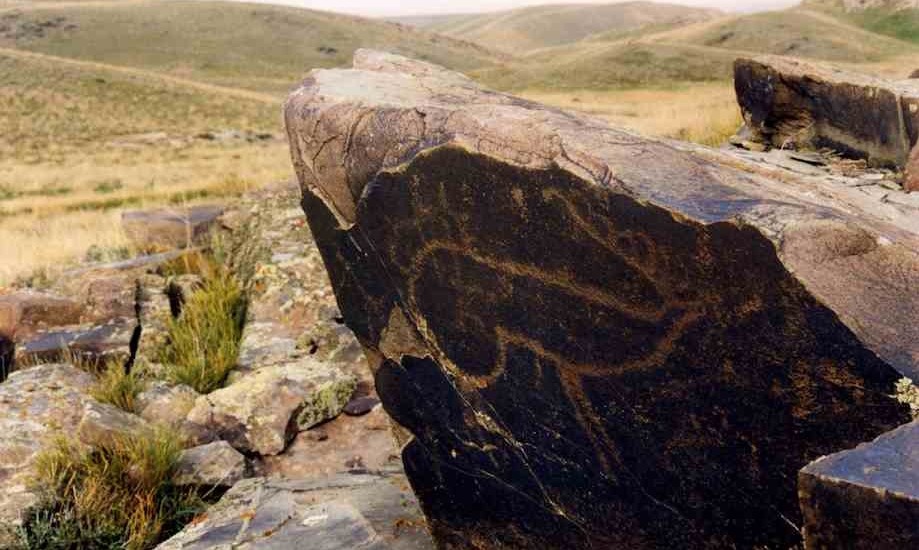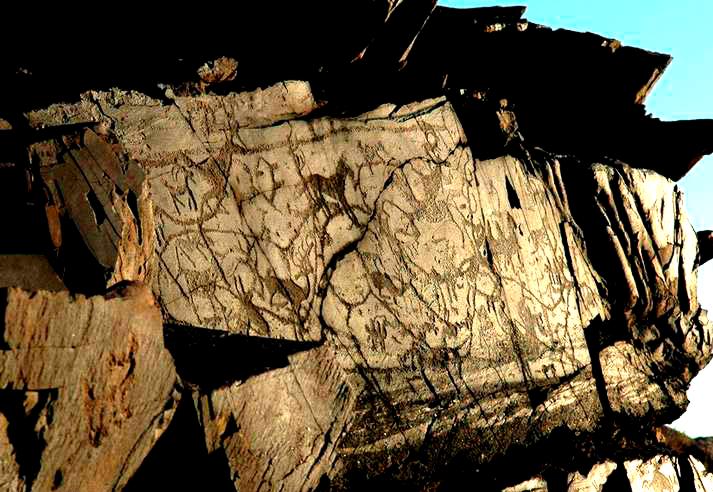Arpa-Uzen is a naturally circumscribed area, a gorge limited by the Karatau mountains in the South, and protected from the northern winds by hills. Because its favorable climate and landscape, the many suitable rock surfaces, and its position on a corridor of ancient migrations, it has been chosen by ancient inhabitants as a main place for petroglyphs. It houses more than 3500 images, the largest collection In S Kazakhstan. It constitutes the most important testimony of the culture and way of life of the people inhabiting and crossing the steppes and semi-deserts of the region during the Late Bronze and Early Iron epochs.
Their stylistic analysis, compared with the one of other sites, gives information on the centers of formation and ways of diffusion of the pastoralist cultures of the steppes, and on their interchanges with the settled centers of the southern regions. Images of animals peculiar of steppe shepherds (domestication, harness and sacrifice of camels; horses with fringes analogous to the representations of the Seismino-Tubino bronze castings, etc.) can be detected, together with southern influences from Transoxiana, Zagros mountains and Mesopotamia. Furthermore, the fact that the petroglyphs of the Iron epoch have been engraved with organic attention on the same surfaces of the Bronze epoch ones, the Saka animal style covering the early styles in such a way to form an indivisible composition and palimpsest, that fact permits the study of the successive unbroken inheritance of the sanctuary, and gives information about the genesis and formation of the culture and arts of the Saka tribes as rooted in the early epochs.




